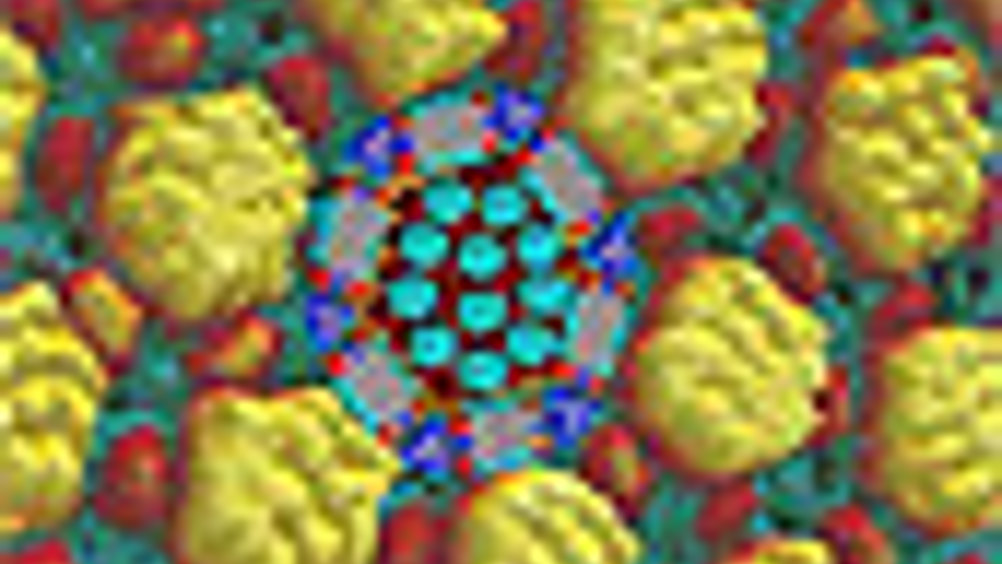Chemical creation

A new chemical technique for creating nanoscale arrays of molecules over a large surface area could be used in sophisticated sensors, catalysis and nanoelectronics.
The process, developed by researchers from the University of St Andrews, uses a chemical solution to herd atoms into tiny dimples, which are created when molecules self-assemble into a honeycomb-shaped network on a gold surface.
This supramolecular network is held together by hydrogen bonds — a type of bonding also essential for DNA.
'The potential of this approach lies in its flexibility on a scale of about 1/10,000 of the diameter of a human hair,' said Manfred Buck, the leader of the research team at St Andrews.
'Using molecules as building units, the features of our structures are less than 5mµ in size, which enables us to control structures and materials at dimensions where new properties emerge.'
One of the advantages of the technique is that it works under ambient conditions. Since no sophisticated equipment or special environment, such as a high vacuum, is required it is easily accessible and adaptable for a wide range of applications. The chemical method provides an alternative route to nanostructures created by conventional lithography, which inscribes patterns into surfaces but struggles for precision on a scale of a few nanometres.
Buck said future work aims for exact control over the arrangement of molecules, ultimately of single molecules. His group also hopes to use the technology to assemble 'nanomachines', molecular devices used to transport and manipulate molecules and nanometre-sized objects.
Siobhan Wagner
Register now to continue reading
Thanks for visiting The Engineer. You’ve now reached your monthly limit of news stories. Register for free to unlock unlimited access to all of our news coverage, as well as premium content including opinion, in-depth features and special reports.
Benefits of registering
-
In-depth insights and coverage of key emerging trends
-
Unrestricted access to special reports throughout the year
-
Daily technology news delivered straight to your inbox










UK Automotive Feeling The Pinch Of Skills Shortage
Not so much attracting skills to the UK but generating skills within the UK is what is needed! That statement suggest they are in effect wanting to...